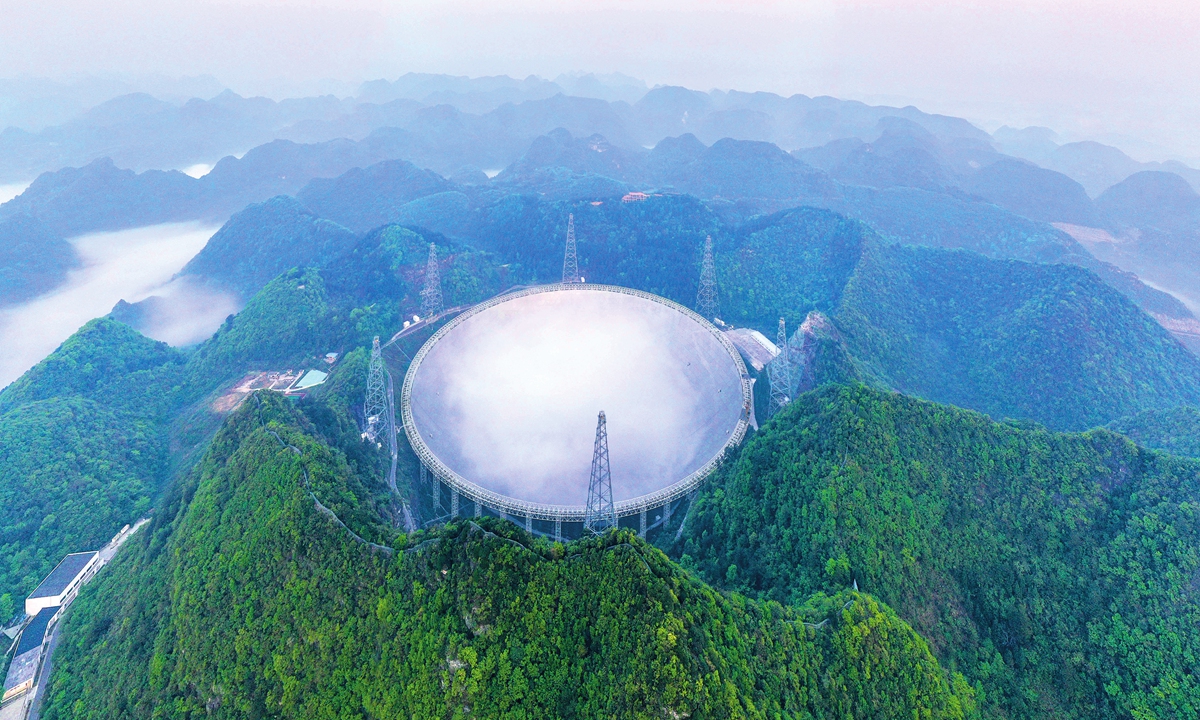China has begun building a planetarium at the world’s highest altitude in Lhasa, Tibet, for space exploration, the state-run media reported on June 13.
China Brings ‘Star Wars’ To Reality! Claims Its AI Can Hunt Satellites In Space Using Deception Tactics
The facility, scheduled to open to the public in June 2024, will aid in collecting data for space exploration, reported Global Times, citing an official familiar with the project.
The planetarium will sit at an elevation of roughly 3,650 meters above sea level in a ‘good environment.’ Tibet, also known as the “Roof of the World” due to its average elevation of 4,000 meters above sea level, will be an ideal location for astronomical observation.
“The planetarium has a gross floor area of 11,571 square meters, and a meteorite inspires the architectural style,” said Wang Junjie, deputy director of the science and technology department of Tibet Autonomous Region.

Meteorites influence the design, and the planetarium is packed with a sense of science and technology and displays modern architecture. Wang described the development as a significant breakthrough, saying that there are still some technical challenges to overcome and that the telescope is still under development.
He further noted that the observation data, combined with data from other facilities, would be used to compute the orbits of objects traveling through space.
China To Have The World’s Largest Refracting Telescope
He said that a refracting telescope with the world’s largest diameter (1.06 meters) would also be installed on the planetarium’s roof, serving the dual objectives of scientific study and science popularization.
The telescope will outshine the diameter of the 1.02 meters refracting telescope at the Yerkes Observatory in the United States.
“With the highest altitude and a refracting telescope with the world’s largest diameter, we believe it will become a new landmark, attracting tourists from around the world,” said Wang.

In addition to scientific applications such as astronomical observation, the report noted that the extensively-used telescope and its large size would make science more appealing to the general population. The planetarium will educate over 100,000 individuals about astronomy and science every year.
“We have always stressed that the planetarium must be built as soon as possible so that children in Xizang can see that ‘there are all stars in the sky,” Wang noted.
Xizang offers distinct benefits for a planetarium since “the region has more sunny days in a year,” a Chinese official added that the region’s atmospheric visibility is excellent.
According to the Chinese media, astronomical advancement is constantly promoted in the region. For example, the Yangbajain Astronomical Observatory, which opened in the 1990s at an altitude of 4,300 meters above sea level, and the Ngari Observatory of National Astronomical Observatories in the western part of the region.
Meanwhile, neighboring India is believed to possess the highest gamma-ray telescope in the world in Hanle, Ladakh. It has a 21-meter-diameter dish and is the world’s second-largest ground-based gamma-ray telescope. Hanle also hosts the Indian Astronomical Observatory, the world’s highest observatory, at 4,500 meters.
Other Planetariums in China
China has many large planetariums that pique people’s interests and help them explore space-related things. The Beijing Planetarium, China’s first large-scale planetarium, opened to the public in 1957, intending to popularize astronomical science.
Last year, the Shanghai Astronomy Museum officially opened its doors on what it bills as the world’s largest planetarium in terms of building scale.
At the inaugural event, the Shanghai Planetarium was presented with a piece of moon soil brought back by the Change 5 lunar mission of the China National Space Administration.

The museum is situated in the China (Shanghai) Pilot Free Trade Zone Lingang Special Area, which covers an area of approximately 58,600 square meters. The Oculus, positioned above the museum’s main entrance, is a prominent feature.
It looks suspended from the building’s cantilevered galleries and serves as a sundial. The Oculus tracks time flow by tracking sunlight on the ground opposite the entrance and the reflecting pool.
In this facility, visitors can interact with data visualization, augmented reality, virtual reality, and biometrics technology to learn astronomical and scientific knowledge. The museum has an educational adaptive-optics solar telescope and a double-focus one-meter telescope to study and popularize science.
- Contact the author at ashishmichel@gmail.com
- Follow EurAsian Times on Google News




